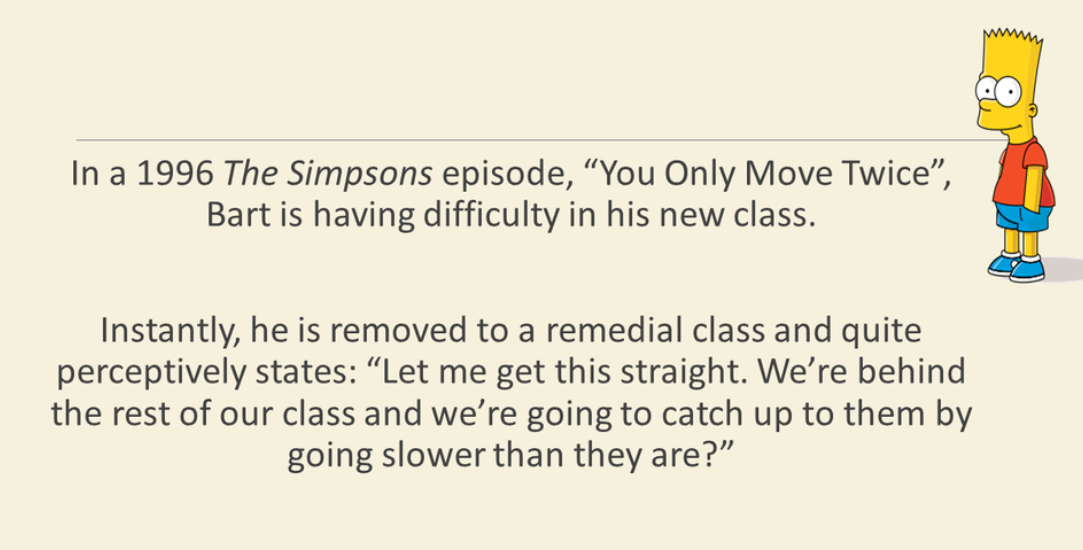Every interaction is an intervention

Having been a leader of teacher development for many years there has never been a more crucial time for responsive, quality teaching. I’m sure all educationalists would agree that our main purpose is to enable children to flourish; and in these uncertain times we can perhaps more than ever be the difference our children deserve.
The pandemic has seen educational gaps widen further and this needs to be addressed urgently in practical ways (EEF, 2020). The answer can be simply put; ascertain the gaps and teach accordingly to close them.
With the undeniable impact of school closures, accurately diagnosing gaps in children’s learning and identifying pupils’ common misconceptions is more crucial than ever. The findings of John Hattie’s Visible Learning (2009), based on years of research around what really matters in education, sought to answer one question: “What do we do in schools and how much impact does it have?” The outcome was to show that top of the list of effect on learning is formative assessment.
In a Twitter post in 2013, Dylan Wiliam said that he wished he’d called AfL ‘responsive teaching’, giving an insight into how he thinks formative assessment should really look in the classroom.
Being responsive to the pupils in front of us forms the basis of good teaching and therefore good learning; we need to unburden ourselves from the weight of curriculum ‘catch-up’ and schemed interventions to minimise the possibility of a lasting disadvantage gap. Find ways to fill the gaps, speed up the learning and provide practical opportunities for lasting change in the long-term memory of all pupils, but especially those that have effectively fallen behind.
Evidence tells us that withdrawal from lessons to perform ‘catch-up’ with the least qualified staff is not the answer as pupils miss out on quality interactions in the classroom (EEF, 2021).

Instead, teachers need to have an in-depth knowledge of how to analyse and assess current knowledge and understanding of all of their pupils and the steps to improve outcomes for all (Wiliam, 2017).
To prepare children effectively for their subsequent learning, we must identify the subject-specific knowledge and ideas that transform children’s understanding and break down these ‘threshold concepts’ (Meyer and Land, 2003) into small steps through carefully sequenced planning to enable subject mastery. Once we are clear about these steps we can be responsive in all our teaching interactions, working to react to the minute-by-minute assessment information gathered, and working to consolidate and grow children’s knowledge and understanding systematically and significantly.
Identifying the key concept(s) within a lesson also enables teachers to plan questions that assess the extent of children’s understanding effectively before moving on to the next step. These ‘hinge’ points, where a teacher decides whether to progress or recap, enable responses to learners’ needs in the moment as well as informing subsequent lesson planning.
Key to this is the ability to provide high quality, in the moment feedback to learners to enable them to improve their own learning. In their systematic review of the impact of feedback on pupil attainment (EEF 2021) Newman, Kwan, Schucan Bird and Hoo found that teachers giving this kind of quality feedback could help children make up to eight months’ additional progress.
As we readjust to a post-pandemic environment, effective assessment or responsive teaching has never been more important. All children should receive high-quality feedback about their current learning and next steps, and teachers should act responsively in the moment and afterwards to plan subsequent lessons, enabling focused inputs on aspects that the children found trickier. Ultimately, for any formative assessment to be successful, it needs to be viewed as an inherent part of the teaching and learning process.
Whilst responsive teaching is not necessarily the single ‘silver bullet’ for dramatically improving outcomes for pupils it definitely is the core component of great teaching and learning. If we can combine quality feedback with the right conditions for learning (including approaches to behaviour management, metacognition and mind-set), add an in-depth understanding of how pupils learn, we have the solution in front of us. In fact, it has always been there and it is what great teachers have always done.
Want to know more?
Assessment and feedback | EEF (educationendowmentfoundation.org.uk)
Practical Ideas for Classroom Formative Assessment - LSI Dylan Wiliam Center
References
Systematic_Review_of_Feedback_(EPPI)_(2021).pdf (educationendowmentfoundation.org.uk)
Wiliam, D. (2017) Embedded Formative Assessment: (Strategies for Classroom Assessment That Drives Student Engagement and Learning): Second Edition, Solution Tree Press
Written by Susan Marbe, Director of ITT, West Essex SCITT
Read our other blog posts here.
